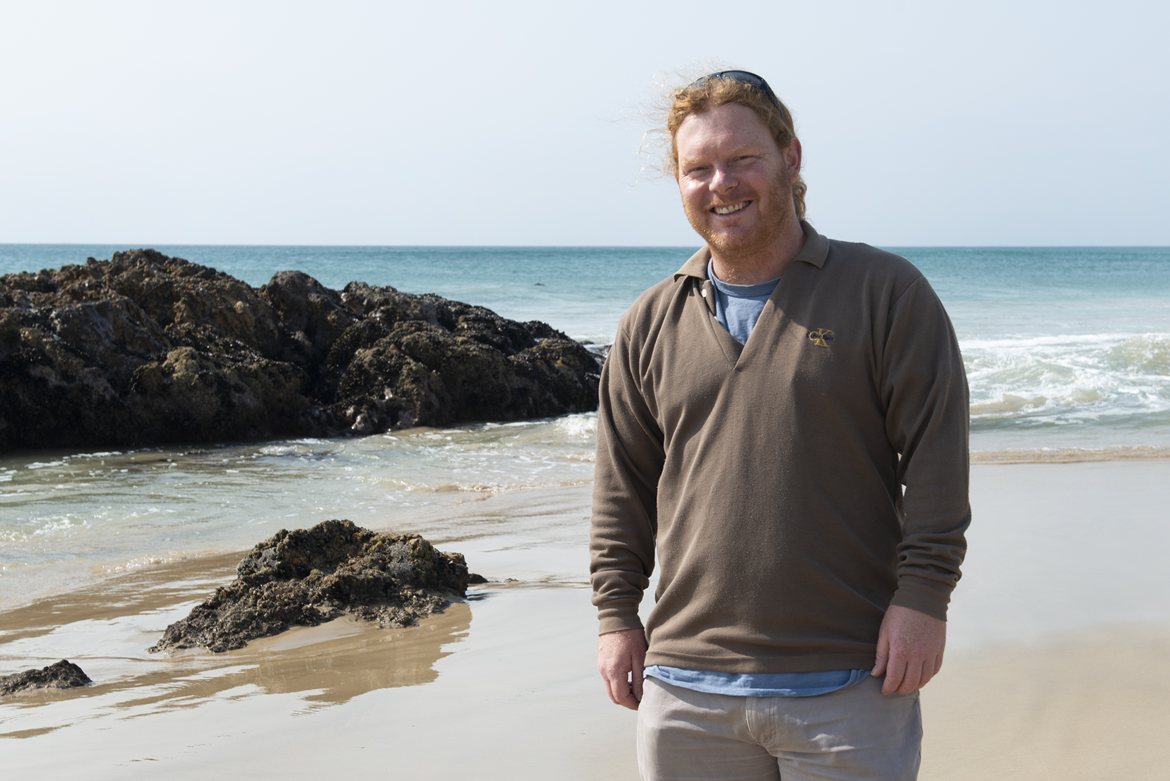If there are changes in their diet – or the distances they travel to find food – researchers are alerted to critical shifts in the sea, like rising sea temperatures, or the depletion of certain species.
For zoology professor Pierre Pistorius – who was recently awarded Nelson Mandela University’s top Researcher of the Year for 2018 – monitoring the behaviour of these relatively-accessible sea predators helps to fuel his strong curiosity to find out the many “unknowns” associated with the marine environment.
Prof Pistorius was one of numerous Nelson Mandela University academics who were lauded for their work in their respective fields at the annual Research, Teaching and Engagement Awards dinner at the St George’s Cricket Stadium on Thursday night.
“I use my work on marine top predators to better understand ecosystem changes. A lot of seabirds are threatened because of their interaction with fisheries. They are often in competition with humans for food – and are among the world’s most threatened animals,” said Prof Pistorius, who heads up the university’s Marine Apex Predator Research Unit (MAPRU), which is gaining recognition as a national and international hub for marine predator research.
Much of his research takes place in near-pristine environments, like the remote sub-Antarctic Prince Edward Islands in the Southern Indian Ocean, where he and his team of postgraduate students can gain important insights into how marine ecosystems work in areas relatively undisturbed by human activity, which allows them to better manage ecosystems and conservation efforts in areas which are impacted by human pressure.
Prof Pistorius also uses his research as a platform to “better understand the influence and impact of climate change and make predictions about future expected changes”.
Through MAPRU, Prof Pistorius works with researchers from around the world – including universities and institutions in New Zealand, Australia, England and France and on islands across the world, including the Falkland Islands, Prince Edward Islands, Seychelles and Reunion, as many of these are important breeding grounds for seabirds and seals.
“We have just received significant funds from the National Research Foundation’s (NRF’s) South African National Antarctic Programme (SANAP) for a further three years’ research at Marion Island [one of the Prince Edward Islands] and are working very closely with French researchers at the nearby Crozet Island, who are conducting similar research and addressing common questions and problems for the Southern Indian Ocean.”
For the Marion Island project, Prof Pistorius is studying 14 different species of seabirds and seals “in an attempt to use their distribution and behaviour to identify ecologically-important areas in the Southern Indian Ocean”.
“We look at where the different species go, using GPS and other tracking devices that we deploy on the animals to track multiple species at the same time, as their foraging distribution in the wide open ocean is a useful indicator of where productive areas are. We use the information they provide to inform marine spatial planning, and potentially to help in identifying or expanding marine protected areas around the Prince Edward Islands.”
A key finding is that some Marion Island species rely on frontal systems, like the Antarctic Polar Front (where cold Antarctic and warmer sub-Antarctic waters meet), as an important foraging zone as these areas churn up nutrients and attract enormous amounts of fish. “With the Antarctic Polar Front moving further south because of climate change and warmer sea temperatures, King penguins, for example, are having to travel much further to find food.”
In the Falkland Islands, Prof Pistorius’s doctoral student Jonathan Handley has been researching penguin behaviour and population changes and, through the deployment of miniaturised cameras on these birds, has made new discoveries about penguin and prey interactions at sea.
Closer to home, at Stoney Point in Betties Bay, Prof Pistorius and MAPRU colleagues Drs Alistair McInnis and Lorien Pichegru, are looking at African penguins and other seabird species to develop a “dynamic resource management model”, where data collected from seabirds reflects the abundance of sardine and anchovy populations in the area. “We can use real-time information to inform fisheries about these populations. For example, if penguins or cormorants are having to travel very far to forage or are losing body condition, it’s an indication that there is not much fish about, and that fisheries should limit their fishing in that area.
“It’s very expensive to figure out how many fish there are, but by monitoring seabirds in real time, we are hoping to improve the management of fishing activities.”
Prof Pistorius said his work with “the more charismatic species” of the sea was a powerful vehicle to bring a “broader understanding of the wonders of the ocean” to the broader public but also to get the message across that climate change and unsustainable resource use are affecting these species and require urgent attention.
“My hope is that our research makes some difference in aiding the poor conservation status of many marine top predators but also help to shift our behaviour towards more informed and sustainable living.”
